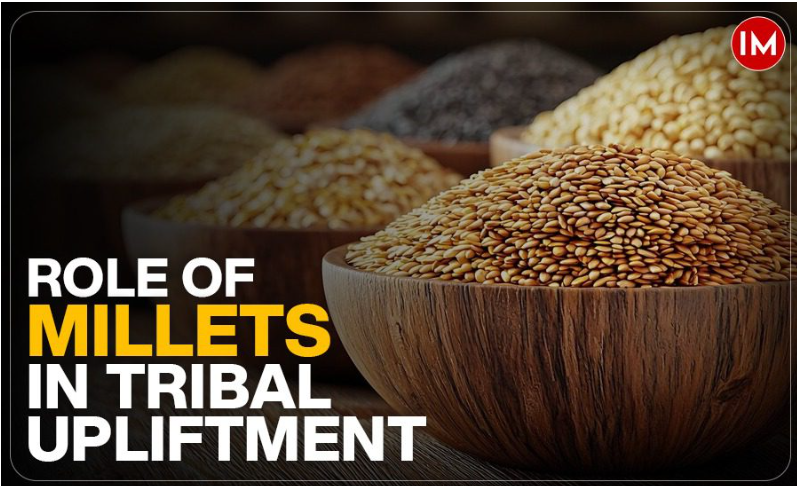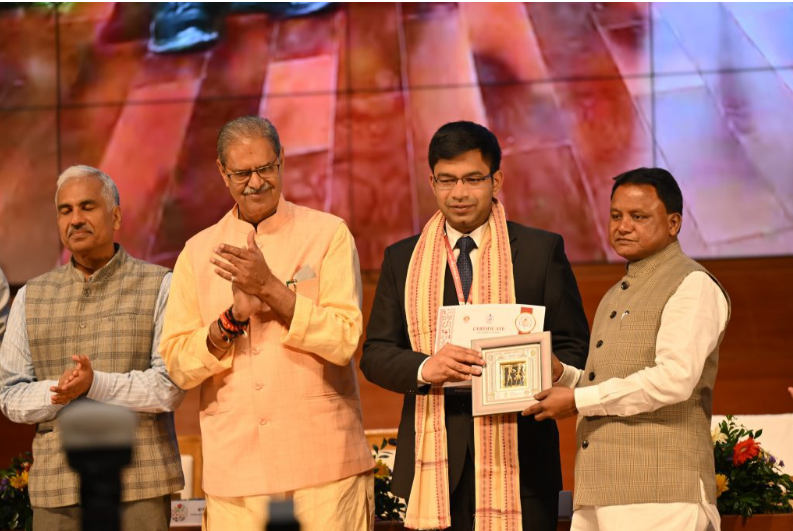Initially, the Odisha Millets Mission was launched in 30 blocks across seven districts in Odisha. Over the years, it has scaled up to 142 blocks in 19 districts, reaching 1.5 lakh farmers and improving agronomic practices over 75,000 hectares.

In a region known for its rich tribal heritage and agricultural traditions, the Odisha Millets Mission (OMM) stands as a bold and transformative initiative. Launched in 2016-17 by the Department of Agriculture and Farmers Empowerment, the Government of Odisha, OMM seeks to revitalise the cultivation and consumption of millets in tribal areas. The program addresses critical challenges of malnutrition, food security, and sustainable farming while fostering economic opportunities for marginalised communities.
Initially, OMM was launched in 30 blocks across seven districts in Odisha. Over the years, it has scaled up to 142 blocks in 19 districts, reaching 1.5 lakh farmers and improving agronomic practices over 75,000 hectares.
REINTRODUCING MILLETS INTO THE MAINSTREAM
Millets, once a dietary staple in India, have diminished in prominence due to the dominance of rice and wheat. However, the nutritional benefits of these drought-resistant crops remain unmatched. The Odisha Millets Mission not only emphasises enhanced millet production but also integrates it into public nutrition schemes, such as the Public Distribution System (PDS), Integrated Child Development Services (ICDS), Mid-Day Meal Scheme (MDM), and welfare hostels.
“What sets OMM apart is its comprehensive approach: increasing millet productivity through improved agronomic practices, promoting value addition, encouraging local consumption, and ensuring a sustainable market for millet-based products,” Mr. Vasan shared with Indian Masterminds.

KORAPUT’S JOURNEY WITH MILLETS
In Koraput, OMM began in 2016-17, covering seven blocks. By 2018-19, it expanded to three more blocks, and in 2022-23, it reached two additional blocks. Today, the program spans 12 blocks, involving over 25,000 farmers and improving over 10,000 hectares of agricultural land. With the guidance of the District Collector, IAS Keerthi Vasan, Koraput, has become a model for inclusive and sustainable development under the OMM framework.
COLLABORATIVE IMPLEMENTATION
The program operates through a multi-stakeholder model, bringing together district authorities, NGOs, farmer producer organisations (FPOs), and self-help groups (SHGs). The Agricultural Technology Management Agency (ATMA) serves as the nodal agency, ensuring effective coordination.
Blocks such as Boipariguda, Borigumma, and Kundra have established FPOs like Sabujima and Nari Pragati to spearhead local implementation. These partnerships have significantly boosted millet cultivation, processing, and procurement in the district.
MILESTONES AND ACHIEVEMENTS
Mr. Vasan further shared that since its inception in Koraput, the program has achieved remarkable progress:
– Crop Coverage Growth: From 1,060 hectares in 2017-18 to over 10,400 hectares in 2022-23, benefiting thousands of farmers.
– Infrastructure Development: Custom hiring centres, community seed centres, and processing units have been established in most blocks.
– Procurement Success: The district’s annual ragi procurement target has grown substantially, with farmers achieving record sales.
– Entrepreneurial Opportunities: SHGs now operate 12 millet Shakti tiffin centres and several processing units for ragi and little millet.
“The introduction of Ragi threshers, pulverisers, and advanced cleaning and grading equipment has reduced manual labour while ensuring better quality produce,” the officer added. Participatory varietal trials have helped conserve traditional millet landraces, strengthening local biodiversity.
NUTRITION AT THE CORE
The program’s focus on nutrition is evident in its efforts to incorporate millets into daily diets. Pilot projects like Little Millet Khichdi and Ragi THR (Take Home Ration) in the Laxmipur block are tailored for pregnant women and lactating mothers. Plans to expand these initiatives aim to address malnutrition and anaemia in vulnerable populations.
EMPOWERING TRIBAL COMMUNITIES
“OMM is more than an agricultural intervention; it is a movement toward empowerment.” By connecting farmers to institutional buyers and providing fair prices under the Minimum Support Price (MSP) mechanism, the program enhances income security. Value-added enterprises like Millet Shakti cafés and outlets, planned for Jeypore and Koraput, are poised to create more livelihood opportunities while increasing urban awareness of millets.
FUTURE PATHWAYS
Under the leadership of IAS Keerthi Vasan, Koraput’s OMM strategy is ambitious yet grounded. Future plans include:
- Establishing additional processing units and infrastructure for SHGs.
- Expanding the non-ragi millet seed production program.
- Scaling up millet-based nutrition schemes across all blocks.
- Introducing Millet Shakti cafés and outlets for wider reach and better market linkage.
The Odisha Millets Mission in Koraput exemplifies the transformative potential of well-implemented public programs. By blending traditional agricultural wisdom with modern interventions, it not only addresses malnutrition but also provides sustainable livelihoods for tribal communities. In doing so, the district moves closer to achieving its goals of equitable growth and food security.
Under the stewardship of IAS Keerthi Vasan, Koraput is setting an example for others to follow—a region where innovation, inclusion, and sustainability converge to create a brighter future.
Article Credit: indianmasterminds